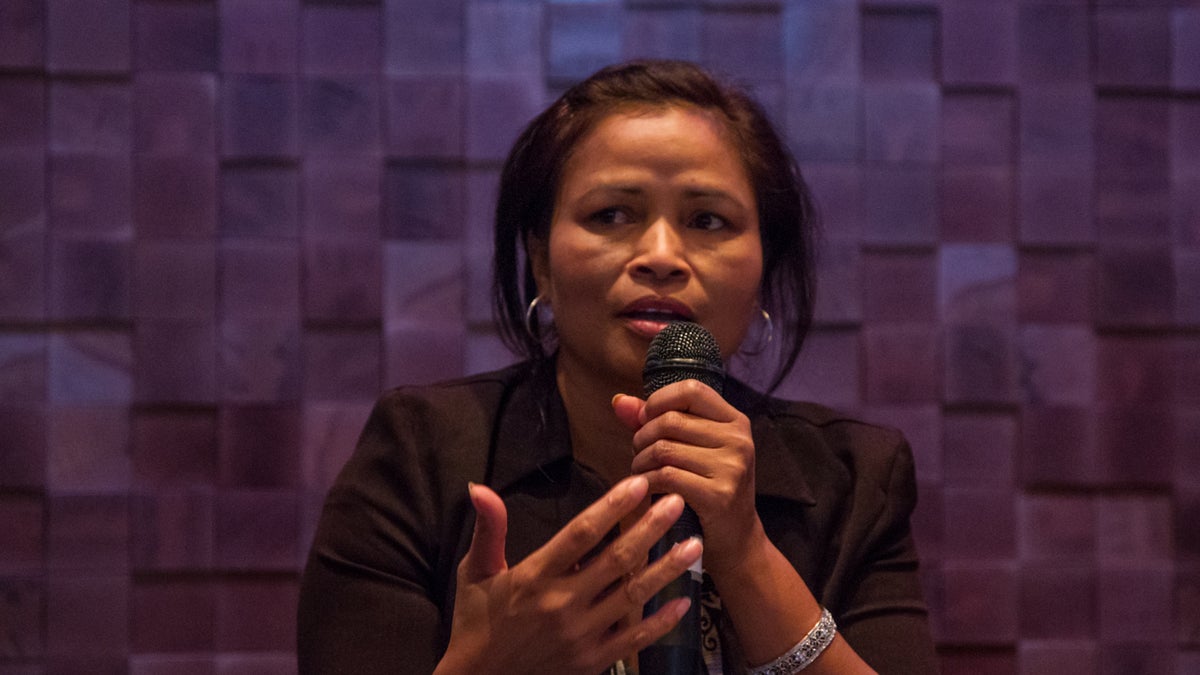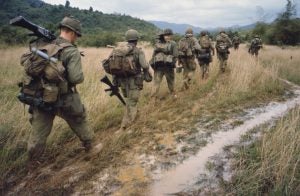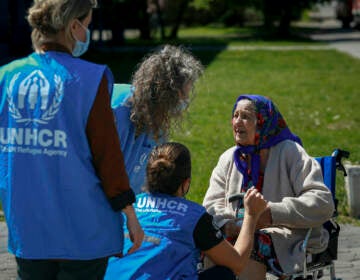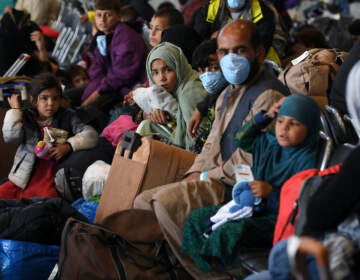A tangled path from Khmer Rouge refugee to community healer
Imagine for a moment your childhood memories included living in a bomb shelter for years, watching your 2-year-old sister die in your arms.

Sarorng Sorn is shown speaking at a public forum at WHYY in 2015. (Ifanyi Bell for NewsWorks)
Imagine for a moment your childhood memories included living in a bomb shelter for years, watching your 2-year-old sister die in your arms.
Imagine being separated from your parents and put in a children’s camp where there was little food and water, and where you were forced to work long hours in the sun.
Imagine spending nights sleeping on a hard bamboo bed with bed bugs and no pillow or blanket in a one-room house with no walls.
Imagine that at the age of 10 you have to run for your life through the jungle, dodging bullets and mines daily and sleeping wherever, eating and drinking anything just to get basic nourishment, sometimes even having to drink water from a pond with dead bodies floating in it.
These childhood memories are not fiction but my own true story as a refugee.
Surviving the war; surviving after the war
I was born in Cambodia during the Vietnam War. A four-year-long carpet-bombing campaign in the skies of Cambodia devastated the country and eventually led to the installation of the Khmer Rouge regime. The war took away my childhood and killed about half a million people and displaced a few million others. The Khmer Rouge starved and killed about 1.7 million people, approximately 21 percent of Cambodia’s entire population.
At just 8 years old I was given the responsibility of taking care of my 2-year-old sister while my parents were sent away to work in their labor camp. My sister got very sick. We had no access to medical care, and she died in my arms. I was so devastated I couldn’t even cry.
After my sister died, I was taken away against my will to a children’s labor camp with hundreds of other children and forced to work long hours with little food and water. The living conditions were so bad that the entire camp was infested with bed bugs, body bugs, and head lice. With no shoes or proper clothing, my body and feet were infected with wounds, and I was unable to see my parents. Sometimes I took huge risks and snuck out of the camp at night, walking miles just to be able to see my mom for a few hours.
The journey of a refugee
When the Vietcong invaded Cambodia in 1979, war broke out again. That’s when my family decided our best chance of surviving was to flee the country. My dad came for me and my other siblings, and we risked our lives crossing the country by foot, running through battle zones, dodging bullets, bombs, and hidden landmines, and trekking through the dense jungles of Cambodia with little food or water. I witnessed hundreds of people die along that traumatic journey. Many people were left behind to die, because we were too weak to carry the loved ones who were too weak to walk.
When we reached the Thailand border, we were stuck there and had to survive by eating whatever fruits or animals we could find. Many people died of starvation, malaria, and other infectious diseases. By the time the UN and other organizations came to rescue us, about half the people living around me had died. Many more continued to die in the crowded refugee camp.
Eventually life got better in the refugee camp. We were given basic food, shelter, clothing, medicine, the freedom to play and make friends, and I finally had the chance to attend school — for the first time — at age 11. I absorbed everything like a sponge, so quickly that I was able to read and write half-way through my first grade. Reading to other children gave me so much joy. At 16, after a few years of high school, I finished my nursing certificate program and was able to help take care of other refugees, which brought me tremendous fulfillment and happiness.
After spending eight years in refugee camps, my family of eight was accepted to the United States. We were settled first in a studio apartment in South Philadelphia and then to a three-bedroom house. At 19, I had to be working right away, but because I had such a desire for education, I decided to attend South Philadelphia High School during the day and work in a chicken factory at night to help support my family. With the help of some wonderful teachers, counselors, and my principal, within two years I was able to graduate with honors and get accepted to the Community College of Philadelphia. I soon started my first job as an interpreter and medical clerk at three Philadelphia Health Center locations.
Becoming an asset to the community
Within 10 years, I was able to earn a college degree, begin a rewarding career, get married, give birth to two beautiful children, and purchase my first home. While working at the Cambodian Association of Greater Philadelphia, I was able to help many refugees and immigrants who had been through difficult times like I had. Community members and other stakeholders turned to me for assistance in dealing with complex issues such as runaway children, conflict mediation, and responses to crises in the community. With good connections locally and nationally, I was able to identify and speak on various issues at local, state, and federal levels, and I developed many impactful programs and services for of all ages. I felt like I was on top of the world and truly living the American Dream.
But then the financial crisis hit in 2008. In the next few years many foundations were forced to either cut or freeze their funding to nonprofits, and reimbursements from government agencies were delayed by five or six months. I kept fighting for resources that too often were taken away. I saw the important work of grassroots organizations like the Cambodian Association consistently undervalued. I was forced to cut my employees’ salaries by 50 percent across the board. I cut my own by 75 percent.
At the same time, I was going through a terrible divorce, losing my house, and going broke. It was among the most difficult periods of my life, and I almost reached a breaking point.
I wasn’t comfortable seeking professional help, because I was afraid of being judged. With the help of an elder from my community, I was able to get in touch with my spiritual side and learn Vipassana meditation techniques that remedied my pains — through seeing things as they really are at the moment, understanding what causes misery, and gaining insight into the universal law of impermanence.
Paying it forward
With the support of family and countless others, I survived that difficult period and came out stronger than before. The Department of Behavioral Health and Intellectual Disability Services made miracles happen, releasing emergency funds to help us meet payroll and keep the organization going. Foundations and corporations supported our work helping thousands of people in need in our area. After 14 years, I left the Cambodian Association in 2014 as its executive director having restored 76 percent of our revenue and helping more people than ever before.
I realized I needed to pause and take care of myself, so I returned to Cambodia and traveled in other countries in Southeast Asia. In Cambodia I volunteered at a crisis center, helping battered women and victims of sex and human trafficking get help and find hope. That journey, helping other less fortunate than I am, and reconnecting with my homeland, helped me heal in many ways. I was able to accept the traumatic experiences I had as a child and a refugee as important parts of my story that make me who I am today.
I am stronger, happier, and wiser, and very hopeful that I can help many others who have had similar experiences and struggles and ultimately make our community and world a stronger, healthier, and much better place.
I am the true embodiment of the American dream and my story can give hope to anyone coming to this country that absolutely anything is possible here.
—
Sarorng “Rorng” Sorn is the Director of Immigrant Affairs and Language Access Services at Department of Behavioral Health and Intellectual DisAbility Services (BHIDS). The above essay is adapted from her remarks at the Faith and Spiritual Affairs 10th annual conference, New Americans: Healing and Resilience, on April 11.
WHYY is your source for fact-based, in-depth journalism and information. As a nonprofit organization, we rely on financial support from readers like you. Please give today.





